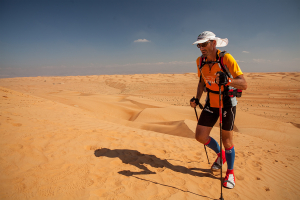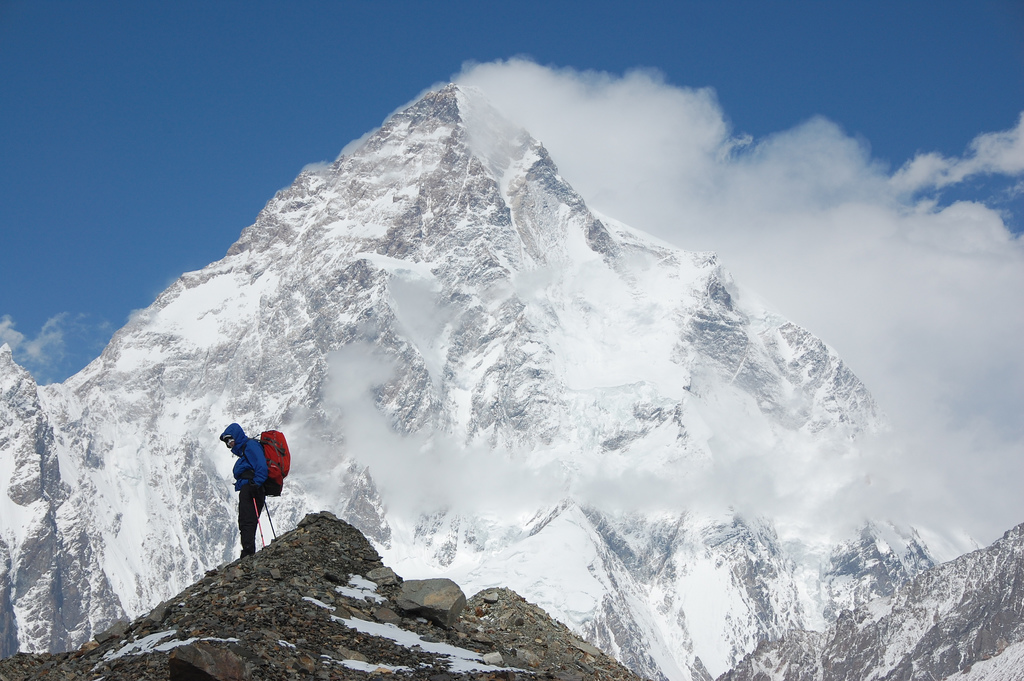Acclimatisation is “when an athlete adjusts to a change in environment (such as a change in temperature, humidity, or altitude), allowing them to maintain performance in the new environmental conditions.” Acclimatisation is needed for any changes in climactic conditions: hot, humid, cold, wind, rain and altitude. Acclimatisation for the purposes of exercise and safety takes around 2 weeks, longer for children.
Sports Medicine Australia say:
Regular exercise in [the new] conditions will facilitate adaptation to help prevent performance deteriorating, or the athlete suffering from [an] illness, during later competitions. Sixty minutes acclimatisation activity each day for 7-10 days provides substantial preparation for safe exercise in the [new environment]. [1]
Acclimatisation can occur by:
- live and train in the new environment where the sporting event will be held
- live and train in another location, but with an environment similar to the host location
- stay at home, but create a simulated training environment. This offers a more controlled environment with little disruption to training and less time away from home. [2]
Acclimatising to heat
Acclimatisation to heat is particularly important if the athlete is travelling from a colder climate. For example, during the FIFA World Cup in Brazil, many athletes had to travel from northern Europe, where football is played during winter in cold conditions. Many countries arrived in Brazil a month before the tournament in order to acclimatise to the warmer conditions. Athletes that have not acclimatised to the heat are at greater risk of heat stroke and hyperthermia.
Acclimasitation to heat brings about the following physiological changes:
- earlier onset of sweating at a lower core body temperature

- increased sweat gland distribution
- increased sweat rate
- increased sweat response to changes in core temperature
- increased skin blood flow (increasing heat loss by radiation and convection)
- increased plasma volume
- decreased heart rate
- decreased core body and skin temperature
- altered fuel metabolism
- increased oxygen consumption
Acclimatisation to Cold
Acclimatisation to cold weather is important for athletes coming from warmer climates. Acclimatisation is done in much the same way as it is for heat and other climatic conditions. If an athlete is not acclimatised to the cold they are at increased risk of hypothermia. The physiological adaptations however are different.
- shivering begins at a lower skin temperature
- improved intermittent blood flow to the hands and feet
- increased metabolic rate
Acclimatisation to altitude
Acclimatisation to altitude is vital, particularly for an athlete moving from low to high altitude for competition. Altitudes above 1500m have a significantly lower concentration of oxygen resulting in decreased performance and increased risk of altitude sickness.
The concept of altitude training has existed for a long time with three different methods being used:
Live High – Train High
This method requires the athlete to live at altitude and train at altitude for maximum exposure to altitude. Evidence of a positive effect on performance at sea level is controversial, though for benefits at altitude this method works very well.
Live Low – Train High
This method means the athlete is living at sea level of low altitude, while training at high altitude. The idea behind this regime is that the athlete is exercising in a low oxygen environment, whilst resting in a normal oxygen environment. This type of training does not generally provide advantages for the athlete competing at sea-level. In fact, training intensity is reduced so athletes actually lose fitness using this regime. However, it may provide some benefit if competition is at altitude.
Live High – Train Low
Here the athlete lives at high altitude and trains at low altitude. The theory is that the athlete will acclimatise to altitude while living there, and in addition the training intensity can be maintained by training at sea level or low altitude. The benefits of altitude exposure are gained while the training intensity is maintained quite high. In order for benefits to occur the athlete needs to be at altitude for more than 12 hours a day, for 3+ weeks. This technique improves sea-level performance and high altitude performance, particularly avoiding altitude sickness. Often this method uses a simulated high altitude environment using a high altitude training tent or room.
As a basic guide, athletes should acclimatise to the conditions where performance will occur at least 2 weeks of exposure to the conditions is recommended in order for acclimatisation to occur and promote the wellbeing of the athlete.
Further reading on Acclimatisation
See our climactic conditions page.
Alistair Simpson (2007) Altitude Training. Accessed at http://www.altitude.org/altitude_training.php on 24 December 2015.
[1] Sports Medicine Australia () Hot Weather Guidelines . Accessed at http://www.sport.unimelb.edu.au/images/ClubResources_47_1218144596.pdf on 24 December 2015.
[2] Lisa Yates. “Climate control: acclimatising to the heat.” Sports Dietitian, The Coaches Edge. 27:1. Accessed at http://www.ausport.gov.au/sportscoachmag/sports_sciences/climate_control_acclimatising_to_the_heat on 24 December 2015.

